DEFINITION OF TERMS:
- KEYSTONE means they are listed by National Wildlife Federation as core plants for a wildlife garden in my ecoregion (Ecoregion 8).
- NOT QUITE NATIVE means they are slightly out of range as determined by GoBotany and NY Flora Atlas.
- Otherwise the plant is native to NYS or native to the area noted.
NOT QUITE NATIVE: Wild ageratum (Eupatorium coelestinum aka Conoclinium coelestinum)
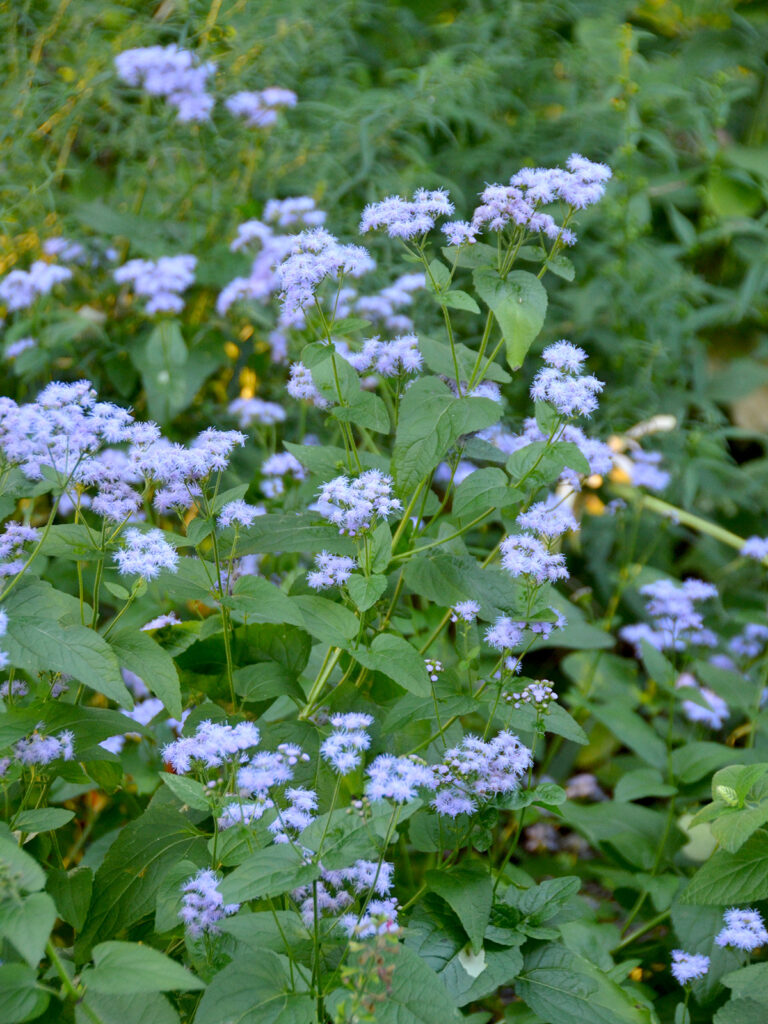
This is a spreader, but isn’t hard to control — in other words, it’s easy to pull out.
It makes a nice late-season patch of blue, and butterflies love it.
This may also provide even more benefits to monarch butterflies when the leaves and/or roots are dying! This Monarch Rx research is underway!
Wildlife: Bees, butterflies
** SPECIAL VALUE TO NATIVE BEES **
** Attracts predatory or parasitoid insects that prey upon pest insects **
- Learn more:
- Wildflower Center: Wild ageratum
- Durham Master Gardeners: Specimen Spotlight
Joe-pye (Eupatorium -maculatum? fistulosum?)
(Now known as Eutrochium)
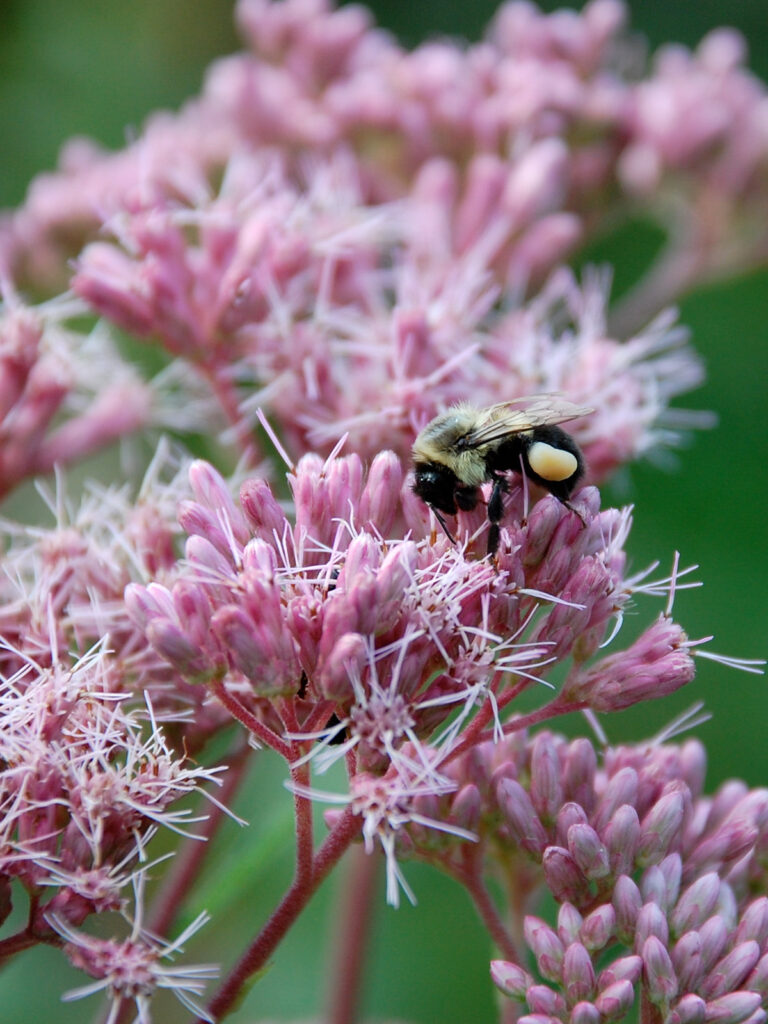
I think I have some of each type, but I’m not sure which is which. Both are very tall plants, but I cut some back quite a bit in mid-late June to limit their ultimate height and make them bushier. It also delays the flowering, which prolongs the amount of time when I have fresh joe-pye flowers, which are a favorite nectar source for bees and butterflies.
A really handsome plant, and I try to always call it “joe-pye” rather than the common name “joe-pye WEED.” It’s not weedy looking at all!
- Learn more:
- Wildflower Center:
- Spotted joe-pye (Eutrochium maculatum)
- Hollow joe-pye (Eutrochium fistulosum)
- Humane Gardener: The star power of joe-pye
- BPlant: Eutrochium – maculatum or fistulosum?
- Wildflower Center:
Common boneset (Eupatorium perfoliatum)
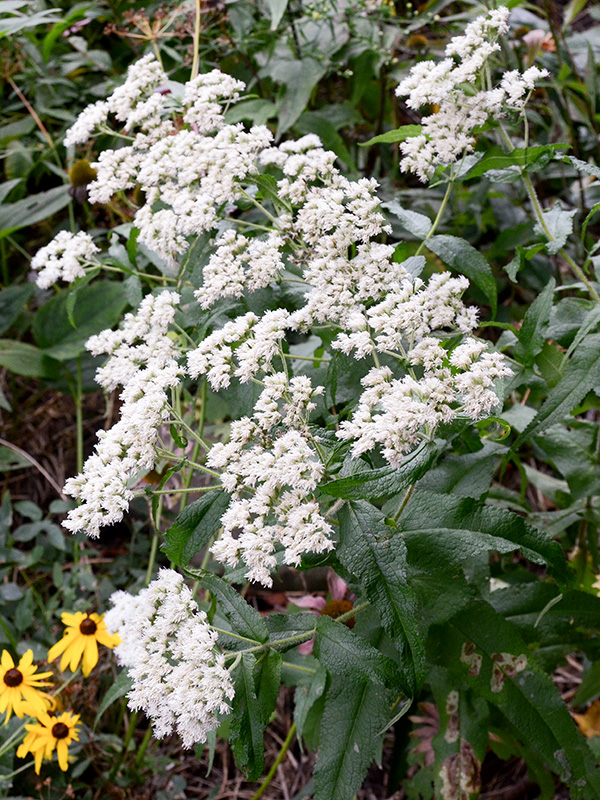
This is an example of a botanical name providing a clue to the plant (or vice versa, I suppose). The species name “perfoliatum” means “through the leaf.” If you look closely, you can see that the stem looks like it’s going right through the leaf. The common name “boneset” refers to the use of boneset to set bones. This was done because of the “Doctrine of Signatures:” plants that looked like body parts or conditions indicated what it should be used for—in this case, setting bones so they would be joined together as are the leaves.
Wildlife: Birds, butterflies
** SPECIAL VALUE TO NATIVE BEES **
** Attracts predatory or parasitoid insects that prey upon pest insects **
- Learn more:
- Wildflower Center: Boneset
- Humane Gardener: Boneset, you have a branding problem
Sweet joe-pye (Eupatorium purpureum)
Many years when I first bought joe-pyes, I didn’t keep track of them. This year (2022) I’ll try to figure out which is which, though they can hybridize so I may now have a mix.
- Learn more:
- Bplant.org: Sweetscented vs. spotted joe pye weed
NOT QUITE NATIVE: Late boneset (Eupatorium serotinum)

We dug up a small plant of this at a gas station as we were traveling through Pennsylvania in late September during monarch migration. You can see how many there were in this field, and if you look closely, you can see a monarch nectaring on a plant in the middle of the photo. (We don’t dig plants from the wild, but this was growing along a gas station parking area, so it didn’t seem unethical.)
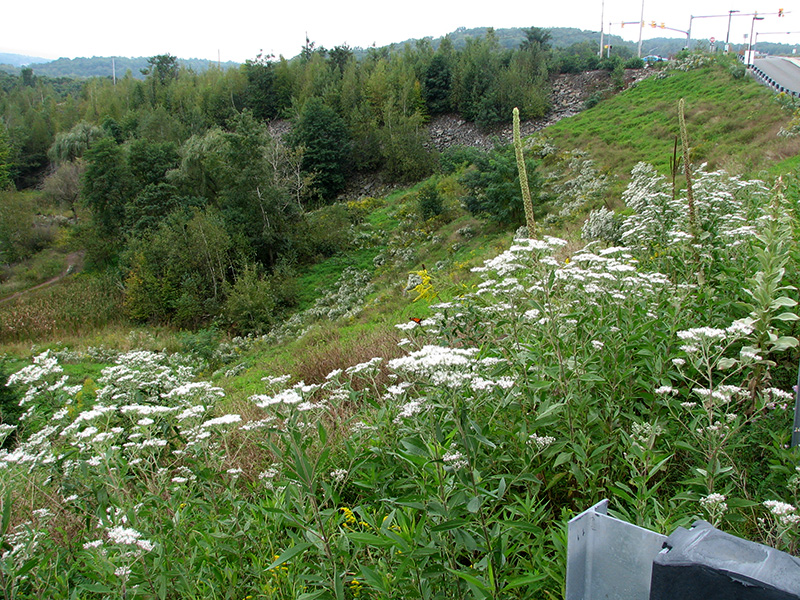
I was interested in it because it was so attractive to the monarchs as they were passing through. The small plant survived and thrived. It is indeed late-flowering, just starting to flower in mid-September.
An interesting connection to monarch butterflies: it might be in their “medicine chest” according to The Humane Gardener!
** SPECIAL VALUE TO NATIVE BEES **
** Attracts predatory or parasitoid insects that prey upon pest insects **
- Learn more:
- Wildflower Center: Late boneset
- BPlant.org: Late boneset vs. tall boneset
Flowering spurge (Euphorbia corollata)
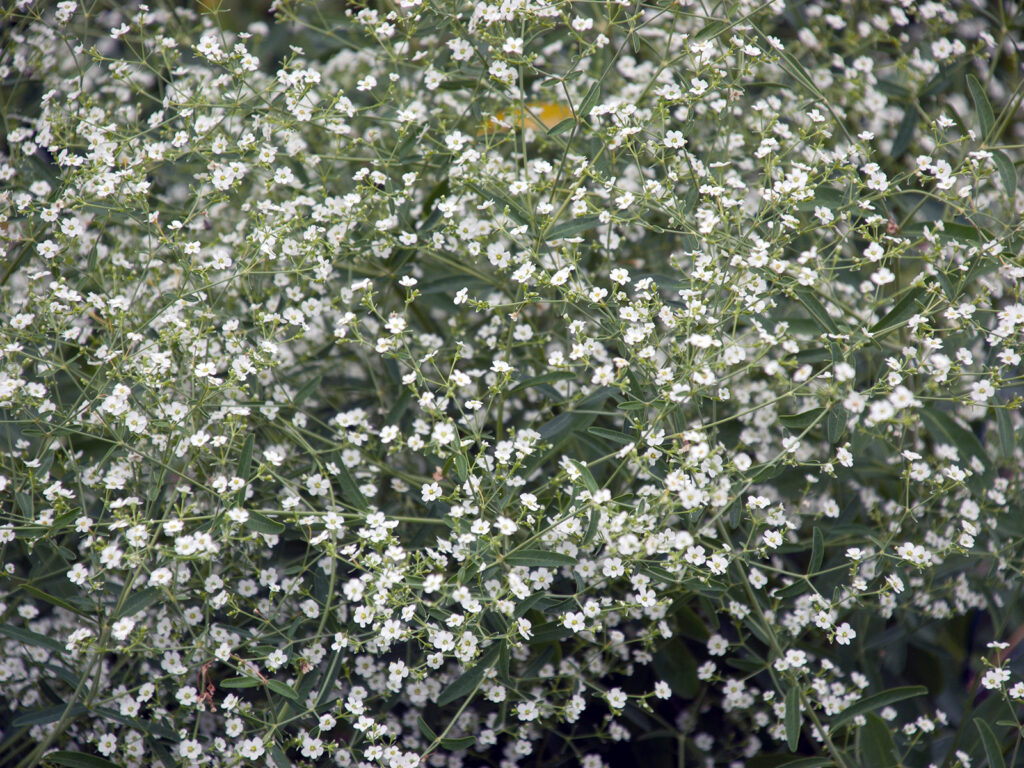
Flowering spurge is one of my favorites. I think this native is much nicer than the non-native baby’s breath it resembles.
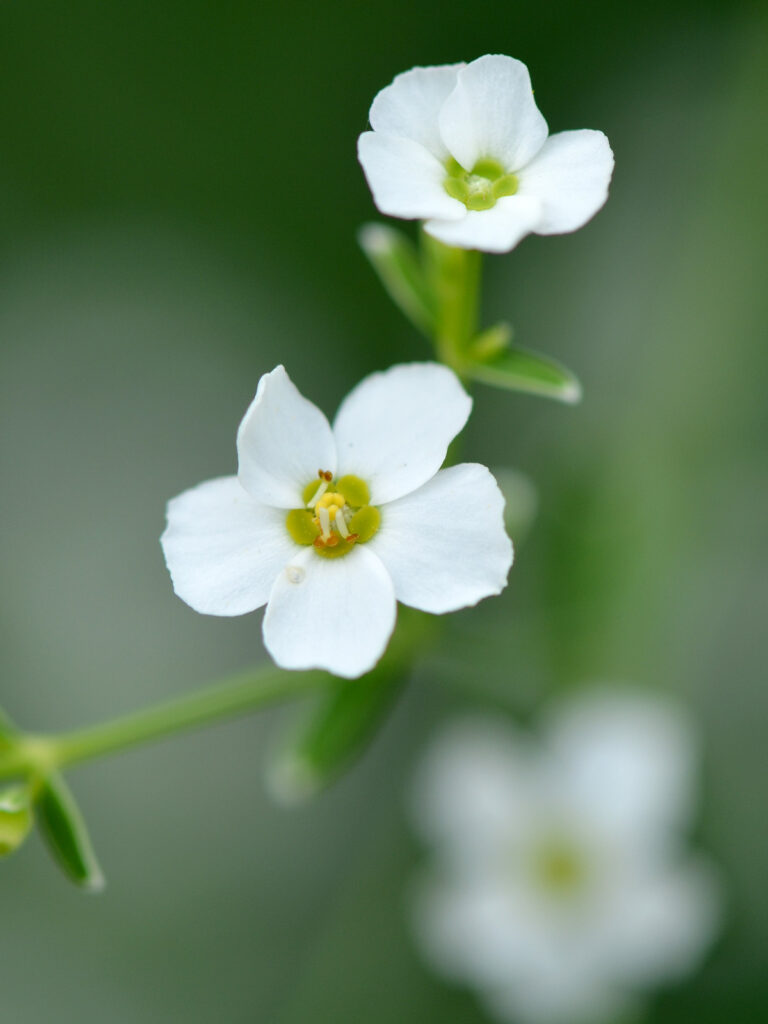
Like flowering dogwood, it’s the bracts that we think of as the flower, not the actual flowers. And since the bracts last much longer than flowers, this cloud of white “blooms” remains for quite a long time.
** Attracts predatory or parasitoid insects that prey upon pest insects **
- Learn more:
- Wildflower Center: Flowering spurge
NOT QUITE NATIVE: Queen of the Prairie (Filipendula rubra)

Beautiful color. It always reminds me of pink cotton candy.
I’ve had to move the plants to our generally deer-proof back yard since they seemed to always wait until just about full bloom then ate it.
Wildlife: Butterflies
- Learn more:
- Wildflower Center: Queen of the prairie
